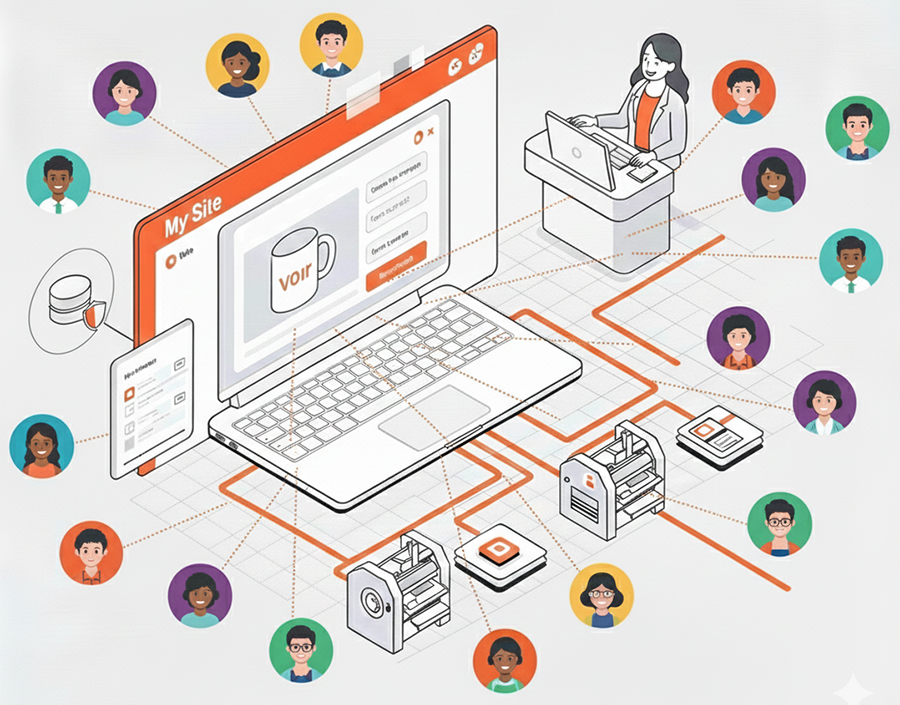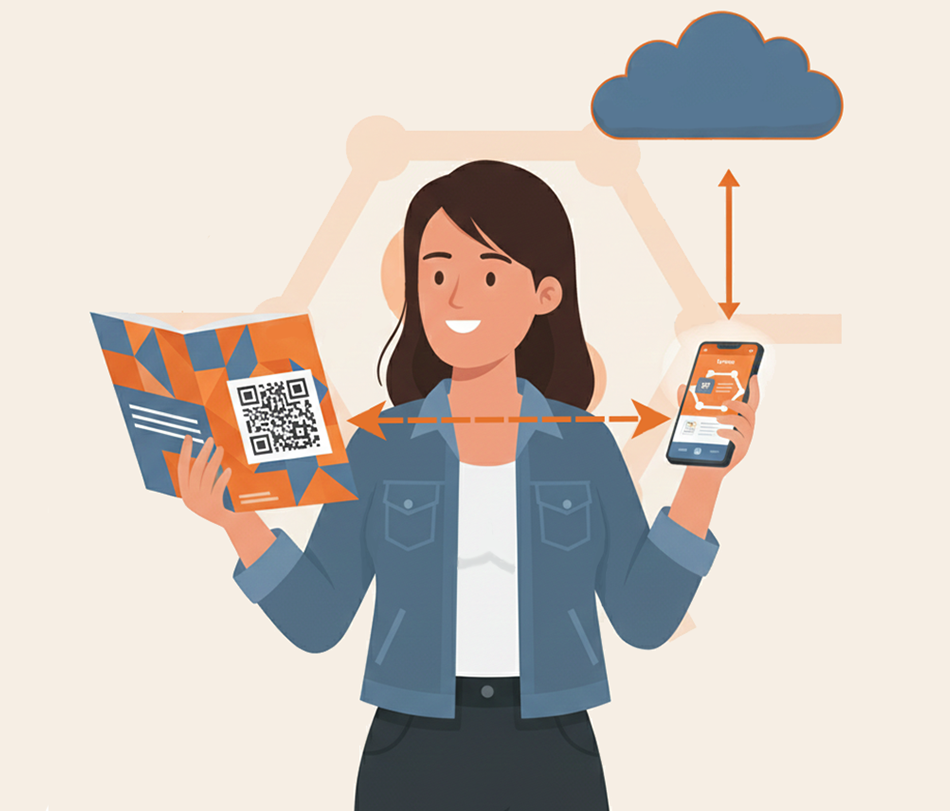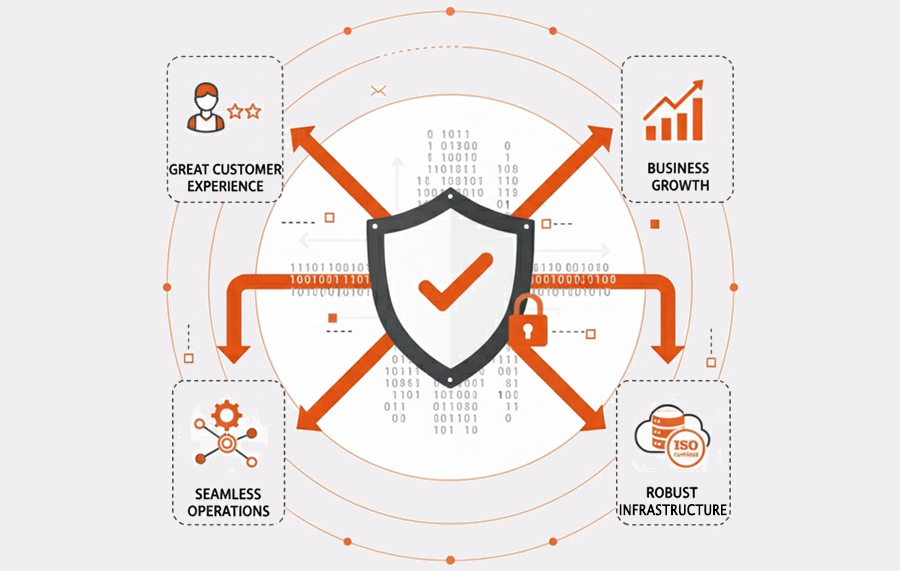15 December 2020
Adaptability and Convenience Are the Watchwords for Print

Adaptability and Convenience Are the Watchwords for Print
There is a well-known saying in reference to Darwin's Origin of Species that characterises businesses that have met the challenges that 2020 has thrown at us and found a way to move forward: "It is not the strongest of the species that survives, nor the most intelligent that survives. It is the one that is most adaptable to change.[^1]"
Looking to 2021, it is clear that market demand will remain unstable for at least Q1 and with the promise of a vaccine, or three, we will likely see the recovery begin in Q2 and some form of stabilisation take shape by Q4.
So, this quote will remain more relevant than ever and it points to some real positives we can take away and build upon –– especially within the print industry, which has continued to transform into an accessible market for all both in B2C and B2B derivatives.
If we start by looking at the successful changes made in the way we have managed to get through pandemic driven lockdowns, one thing becomes clear, we have been serviced by our convenience. Indeed, the restrictions that have placed on our freedom of movement and congregation has resulted in a fundamental shift in consumption patterns with a big drive towards online buying from groceries through to personalised greetings cards.
We can praise Amazon as being the leader in this, but other services have successfully followed on and adapted to harness demand and significantly improve on the methods used to service it.
Convenience is king
We can now order something, and it will be delivered where we need it, and indeed most of the time when we need it. We have to come back to Amazon as a market leader in this field and certainly a case study in successful adaptation. The process of ordering is so slick now that we only have to swipe a finger when we see what we want on our phone and it can arrive the same day or next day at our convenience.
So how does this help the print industry? Well, our industry has been yearning for change for many years now, lagging behind most other sectors in how they have transformed to embrace the internet.
Indeed, as Arno Ham, Chief Product Officer at Sana Commerce writes: "Most of the 2021 B2B e-commerce trends are about enhancing customer experience and convenience. The same topics also re-emerge, as technology gets smarter and enables previous trends to evolve even further in 2021.[^2]"
The generally agreed wisdom within the bubble of the print industry is that our products should not be seen as a commodity and that it's very difficult to package many print products and sell them online. But the truth is, the consumer doesn't care. If you can specify and order a car online and have it delivered to your door, then print is not a big challenge.
People buying online just want what they want at their convenience, they are used to it now. They want to easily browse, pick something at a price they are willing to pay and forget about it until "it" arrives within a reasonable time. They are not concerned with what kit you have, how many hours you take to do the job, or if your van is a hybrid or fully electric –– they want to order at their convenience.
The important question to ask yourself is: Why shouldn't they? If you cannot express your good intentions, environmental credentials and high levels of quality and service to them as they browse your goods online, then you are missing the opportunity, especially in a B2C context.
Learn from the best
You need a clean, easy to navigate interface or online storefront, that allows a user to find, edit and checkout with payment in as few clicks as possible, without overselling what they could have in addition to what they want.
This way they will come back again and again, and you will be on the road to building trust in your online brand presence. But you have to do everything you say you can do, turn around the job and get it delivered to a high standard, it is a fact that people will pay more for convenience.
A good example of this is that many DIY items are cheaper on Screwfix.com or B and Q's diy.com (two leading U.K. suppliers) however Amazon and eBay have convenience – browse, select, swipe. What is clear is that the ease of use of an eCommerce platform is what is really key to driving sales, not necessarily price alone.
This is as important in a B2B context as in a B2C one, as what remains true is that you still have to make their buying process easier and increase its transparency, security and accountability. What is great news is that ERP/CRM platforms such as SAP/Ariba, Coupa and Oracle have developed very impressive 'plugin' platforms that enable this to take place.
The good thing is that larger organisations are leading with their own versions of Amazon/eBay etc. in the adoption of enterprise resource planning (ERP) and customer relationship management (CRM) applications such as SAP/Ariba, Coupa, Oracle –– whereby you "plugin" in order to trade with them.
The customer controls their platform, which has been built to suit their specific needs, and it also offers control for their stakeholders, which have their businesses best interest at heart.
What is key to understand here is that by investing in suitable technology such as those mentioned above, you can secure a customer's business longer term and be paid in up to four working days –– with no invoice reconciliation and consequently a large reduction in admin hours.
Web-to-Print horizons
What is important to take away from this is that Web-to-Print technology has offered a staging post on this journey, but never has it been in such high demand as the need to transit business online has become critical.
The biggest shift taking place is that both B2B and B2C consumers have very significantly increased their expectations of the procurement process and now expect to have a solution that can be reached from anywhere, upon any device, at the user's immediate convenience.
We must stop thinking ourselves as being central in this selling process and see ourselves as being a vehicle in which people can be, make the buying of print easier – the customer is ultimately what ultimately must be kept front and centre.
Just as armed conflicts or the threat of it clearly drives technology advances that then filter down to the rest of society (the internet being the best example), the pandemic will drive change for our solutions to be customer-centric based upon social distancing and working remotely. To facilitate this, we need a "connection" to that customer profile, whether it be a website or portal/storefront providing them with a convenient way in which to engage with us the print suppliers.
Web-to-Print is not the out of the box solution that many providers will let you believe, it needs to be understood in parallel of the understanding of your customers. What a good solution does do very well is provide those common needs freely without additional expense or costly development, this is the most common reason why a well-priced feature-rich system will always succeed over a cheaper solution most often from a less advanced market.
Those features reduce the need for "hidden costs" which you will have to bear in order to make your online proposition work. A good Web-to-Print solution will get you going and engaging with customers, but the people behind that solution should support you in growing and developing both you and your teams understanding of how it can work for you longer term. This is so you can increasingly be more automated and thus more profitable by reducing unnecessary manual tasks and focus your team on real value delivery to your customers.
Alas, we don't know the outcome of 2021 and what is ahead of us, but some factors are very clear and well documented: we need to get online in order to service our customers, we need to provide a solution that can evolve and work around their needs in their environment and it must be something that is convenient in order to succeed. More than that, what embracing this type of change does is fundamentally make your adaptable, and that is what will ensure your business success across 2021.
[^1]: Leon C. Megginson, Professor of Management and Marketing at Louisiana State University at Baton Rouge commenting on Darwin's Origin of Species [^2]: https://www.sana-commerce.com/blog/b2b-ecommerce-trends/
Adaptability and Convenience Are the Watchwords for Print
Table of contents
Share this article


